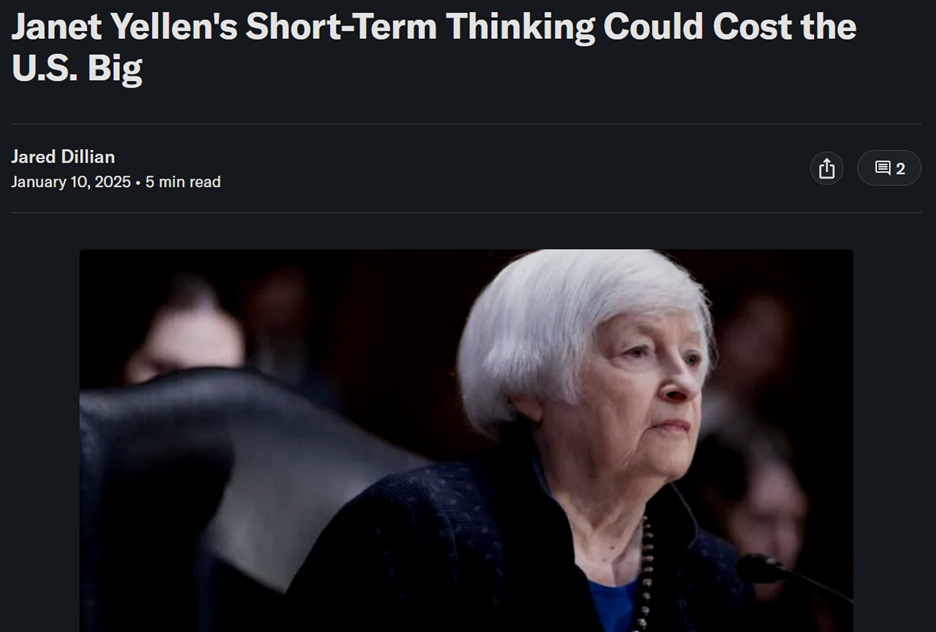Fed’s Stealthy Shift Spells More Upside for Bitcoin
 |
| By Juan Villaverde |
Geopolitical turmoil has cooled off this week.
Which means we have a chance to re-focus on what really drives crypto prices long term …
Flagrant money printing and currency debasement.
In this regard, quite a lot has recently been going on under the radar.
A New Way to Print Money Quietly Emerges
Not so long ago, crypto investors were laser-focused on the Federal Reserve’s balance sheet.
Why?
To observe whether the Federal Reserve was buying more Treasury bills, notes and bonds. Which, of course, it pays for with checks written on thin air.
This is a keyway the Fed creates new money.
Recently, however, the burden of financing Washington’s endless appetite for spending is falling not so much on the Fed (or other central banks).
Instead, it’s increasingly falling on commercial banks.
From a pure money-printing perspective, regular banks are not so different from central banks.
Both lend money — to whomever they wish. And in a fractional reserve banking system, whenever a new loan is created, the money supply increases.
The key difference is motive. And while that may seem a small nuance, it’s anything but.
Central banks are political. When they lend, they don’t expect to be paid back. They lend to finance government deficits.
They also act as a backstop to the entire financial system.
What happens if too many depositors pull too much of their money out? (As occurred during the mini-banking crisis of March 2023?)
The central bank has to step in and lend money to keep banks afloat.
Commercial banks are private companies.
They’re focused on profit and return on investment. So, even though they can “lend” new money into existence, they only do it if they think the borrower will repay the loan plus interest.
But now, this distinction between central and commercial banks is being increasingly and deliberately blurred.
In the U.S., this began when former Treasury Secretary Janet Yellen shifted government borrowing away from longer-term bond issuance … and toward short-term debt.
This wasn’t a small shift.
In an era of high inflation and ballooning deficits, investors — especially banks — avoid long-term debt.
Why? Because if you’re holding 10- or 30-year bonds and rates rise, your bond portfolio sinks like a stone.
You’re stuck with large mark-to-market losses. And you can’t sell without realizing a huge hit — one that could threaten the solvency of your institution.
That’s exactly what sank Silicon Valley Bank (and others) in March 2023.
By contrast, short-term debt — maturing in under two years — is seen as a cash equivalent.
Banks buy it up. Even if interest rates rise, they don’t have to sell. They only have to wait a few months — and get fully paid back by the government, plus interest.
In short, these short-term Treasury bills are considered “risk-free” by commercial banks and money market funds. They’ll buy every one of them, regardless of inflation or deficit concerns.
That’s why Yellen issued almost exclusively short-term T-bills during her tenure. In 2023 alone, the $2.6 trillion added to the national debt was financed with $2 trillion (almost 80%) in T-bills.

Translation: It wasn’t the Fed financing Uncle Sam’s reckless spending in 2023 or 2024.
It was the commercial banking system.
New Administration, Same Old Treasury Policy
Current Treasury Secretary Scott Bessent promised to take a different approach. But ultimately, it seems he is following in Yellen’s footsteps.
He also plans to issue new debt with an 80%-20% split favoring short-term debt.
And now, the Fed is joining the game, too.
It’s doing so through a mechanism known as the Supplementary Leverage Ratio (SLR).
I’ll skip the technical jargon. The SLR simply defines how much money banks must hold in reserve when they hold short-term T-bills.
Here’s how it works …
Suppose the SLR is 5%. That means for every $100 in T-bills, a commercial bank must also hold $5 in cash reserves.
This limits how much money a bank can “print” by lending to Uncle Sam (in the form of T-bill purchases).
Lower the ratio … and banks can print more money.
And that’s exactly what the Fed did last week, lowering the SLR from 5% to a range between 3.5% and 4.5%.
Translation: Commercial banks are now allowed to print more money.
And print they will. Goldman Sachs estimates this move enables banks to print up to $5.5 trillion in new money to buy U.S. T-bills.

My prediction? The SLR will fall further if Uncle Sam’s finances continue to deteriorate — which they almost certainly will.
SLR is the new “indicator” to watch. Because lowering the SLR is basically equivalent to printing trillions in new money.
The only difference is who does the printing. And because this money creation is performed by commercial banks, it does not show up on the Fed’s balance sheet.
This is …
Stealth by Design
For months, I’ve been saying Federal Reserve officials would find new ways to inject liquidity without quantitative easing (QE).
Because at the end of the day, their job is to ensure the government can borrow as much as it wants.
And with QE out of fashion, they needed something to maintain the illusion that the era of free money is over.
Now you see the trick.
Crypto markets will also see through the jargon and technicalities. And recognize SLR lowering for what it is: stealthy, backdoor money printing.
Whether the Federal Reserve or JPMorgan Chase is responsible for the printing doesn’t matter.
If new money is being created to fund ballooning deficits, that means currency debasement.
Nothing stops this train. And that’s very bullish for Bitcoin and crypto.
Best,
Juan Villaverde
P.S. Bullish conditions for crypto create opportunities elsewhere in the market. And on Monday, July 7 at 2 p.m. Eastern, Marija Matić will show you how you can benefit from these opportunities.
Specifically, she’ll reveal how you can target yields up to 361% … 912% … and even 1,168%.
Yields like this simply don’t exist in TradFi.
If you want to make the most of this bull market, I strongly suggest you save your seat for Monday’s presentation now.

